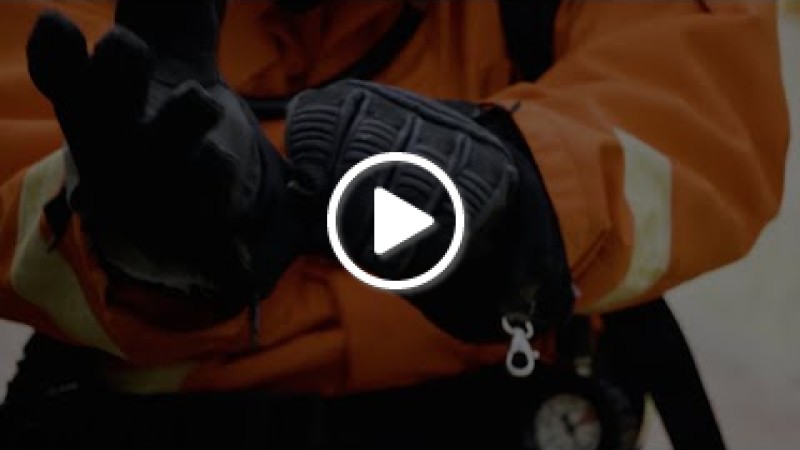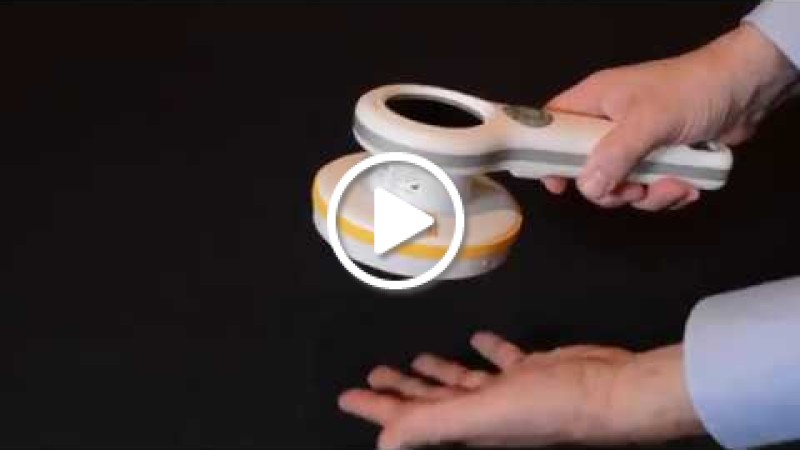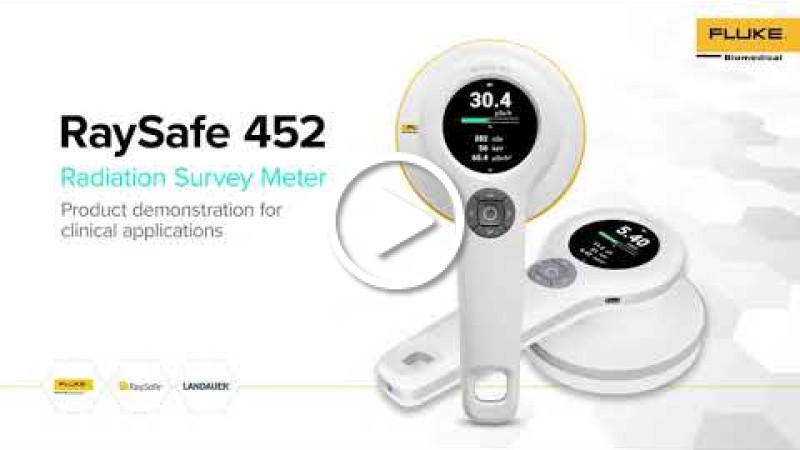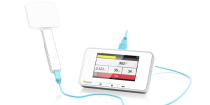What are survey meters?
How and when can they be used?
Survey meters are portable instruments used for radiation monitoring to detect potential radiation hazards, making sure levels are within safe limits for people and the environment.
Such instruments can be used for a broad range of industrial and medical applications such as:
- X-ray tube leakage
- X-ray wall leakage
- Scattered radiation
- Radioactive spill detection
- Environmental radiation
- Non-destructive testing using X-ray
Different terms for radiation are used depending on if it is:
- Emitted from a radioactive source – measured in Becquerel (Bq) or Curie (Ci)
- Related with dose absorbed by a person, which in other words means the amount of energy deposited in human tissue per unit of weight – measured in “Radiation Absorbed Dose” gray (Gy) or rad
- Associated with a biological risk for a person to suffer from health effects due to exposure – measured in Sievert (Sv) or rem
To determine the biological risk, a Quality Factor (Q) has been assigned to each type of ionizing radiation (alpha and beta particles, gamma rays, and x-rays) depending on its ability to transfer energy to the cells.
When a person is exposed to radiation, the biological risk in Sievert can be achieved by multiplying the dose in gray by the Q number for the specific radiation type: Sv = Gy x Q (1 Sv=100 rem).

Examples of some common radiation exposure levels:
- Exposure to cosmic rays during a roundtrip flight from New York to Los Angeles, 0.03 mSv or 3 mrem
- One dental X-ray, 0.05 mSv or 5 mrem
- One chest X-ray, 0.1 mSv or 10 mremo
- One mammogram 0.7 mSv or 70 mrem
- One year of exposure to natural radiation (from soil, cosmic rays, etc.), 3 mSv or 300 mrem
How to measure radiation exposure levels with survey meters
Air Kerma (Kinetic Energy Released in Material), is a measure of radiation levels in the environment. Not all energies will be absorbed in the human body since high energy radiation will pass furher.
The Ambient Dose Equivalent H*(10) is the absorbed dose at a reference point 10 mm into human tissue like material. The absorbed dose at the point includes contributions from both primary photons and scattered photons.
The RaySafe 452 survey meter measures Ambient Dose Equivalent values, H*(10), between 0 μSv/h – 1 Sv/h (0 μrem/h – 100 μrem/h) for energies of 16 keV – 7 MeV. The Air Kerma range is 0 μGy/h – 1 Gy/h (0 μR/h – 114 R/h or 0 μrad/h – 1000 rad/h) for 30 keV – 7 MeV. There are two different lid versions available depending on measurement parameter, Air Kerma or Ambient Dose Equivalent. If you are interested in alpha, beta or gamma radiation count rate (cps or cpm), simply measure without any lid.
RaySafe 452 consists of semiconductor diodes, and a GM tube, bringing all advantages of the two technologies together in one device:
- High sensitivity
- Fast response time
- Wide dynamic dose rate range
- Wide and flat energy response
Fluke Health Solutions also offers ion chamber survey meters. Fluke 451P is a pressurized ion chamber survey meter. If you would like to measure skin dose, H’(0.07), Fluke 451B is an option.

Watch webinar:
One device endless possibilities
Watch video:
RaySafe 452 Product Demonstration
White Paper:
Radiation survey meters in hospitals: technology, challenges, and a new approach
Case study:
RADSCA uses 452 for a variety of radiation safety services
Product catalog:
RaySafe 452 Product Catalog
Brochures & Flyers:
RaySafe 452 Product and Specification Brochure
Flyer: Selection Guide Survey Meters
Flyer: Industrial Applications
Flyer: Is RaySafe’s PTB traceability equivalent to NIST? Yes!
Manual:
RaySafe 452 User Manual

What you need for measuring
Best practices for radiation measurements to comply with radiation protection guidelines
Recommendations and safety standards for radiation protection are established by the International Commission on Radiological Protection (ICRP) and the International Atomic Energy Agency (IAEA). In addition there are national/local regulations.
Instruments used for measuring radiation levels must be calibrated against a traceable reference instrument to a national standards laboratory. It should be done at a frequency prescribed by the regulatory requirements of the country.
Instruments also need calibration immediately after repair or upon detection of any sudden change in response. The long term stability of survey meters must be checked at regular intervals using a reproducible setup. Read how this can be done in:
RaySafe 452 Calibration Check Instruction

The history of survey meters
In 1928, Lauriston Taylor by accident received a big dose of radiation when he forgot to put a shielding lead panel in place, so he ended up unintentionally standing in the middle of the X-ray beam. He was then trying to recreate the exposure to be able to estimate the exposure. It was not as high as he feared but he became convinced it should never happen again so he designed a battery operated instrument which he could carry with him to measure exposure rates. This was the first known survey meter.
Another story is from 1936, when a radiography source had disappeared at a General Electric (GE) facility in Massachusetts. The insurance company was immediately notified, an they contacted Dr. Evans at MIT and asked him to help locate the missing source. Evans packed his count-rate meter, a long extension cord, and a GM detector and went surveying the plant with his bulky equipment running off AC current. Evans located a strong source of radiation coming from a worker’s locker. When opened, the radium source was in the pocket of his shirt. The worker was identified and found to have a severe skin burn on his chest. And on his back.
In response to a potential threat from the Germans to use radioactive poisons on the allied forces in Normandy in June of 1944, the Metallurgical Laboratory in Chicago and the Victoreen Instrument Company in Cleveland had developed portable radiation detection devices suitable for use in the field. The Victoreen Model 247 was developed as part of this effort. Manhattan project and Operation Crossroads involving development and testing of the atomic bomb triggered the era of survey meter development that still is ongoing.




